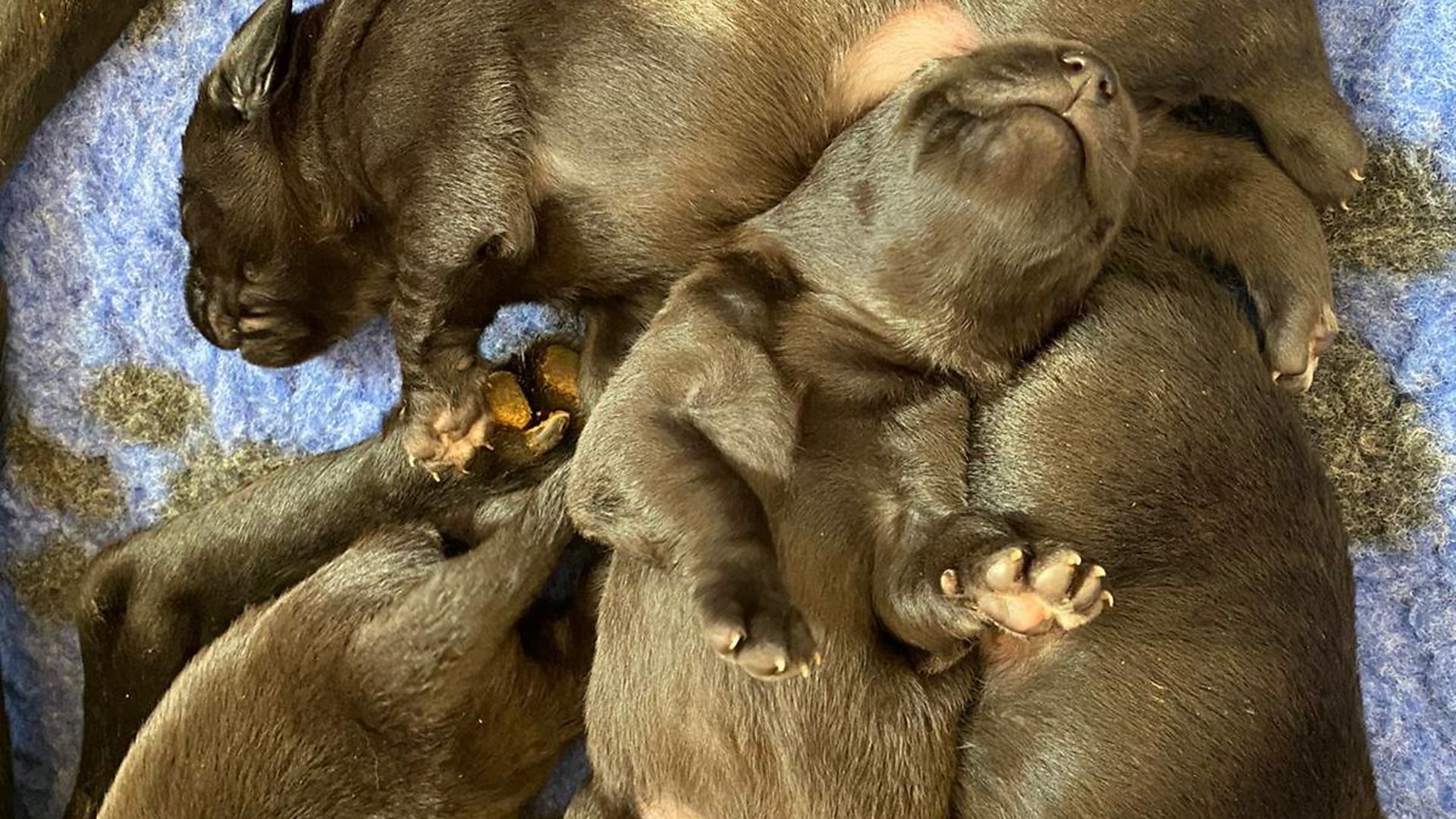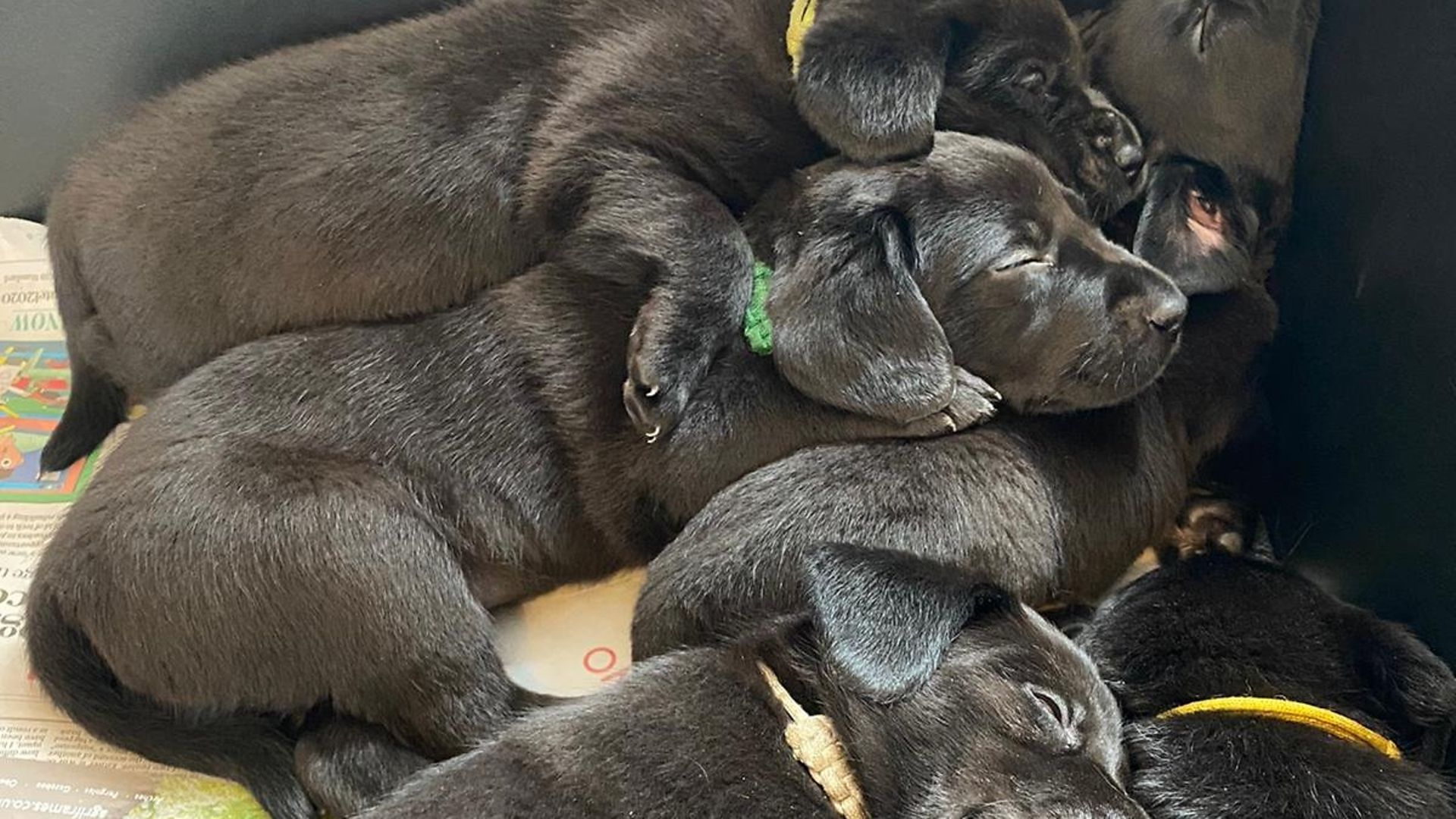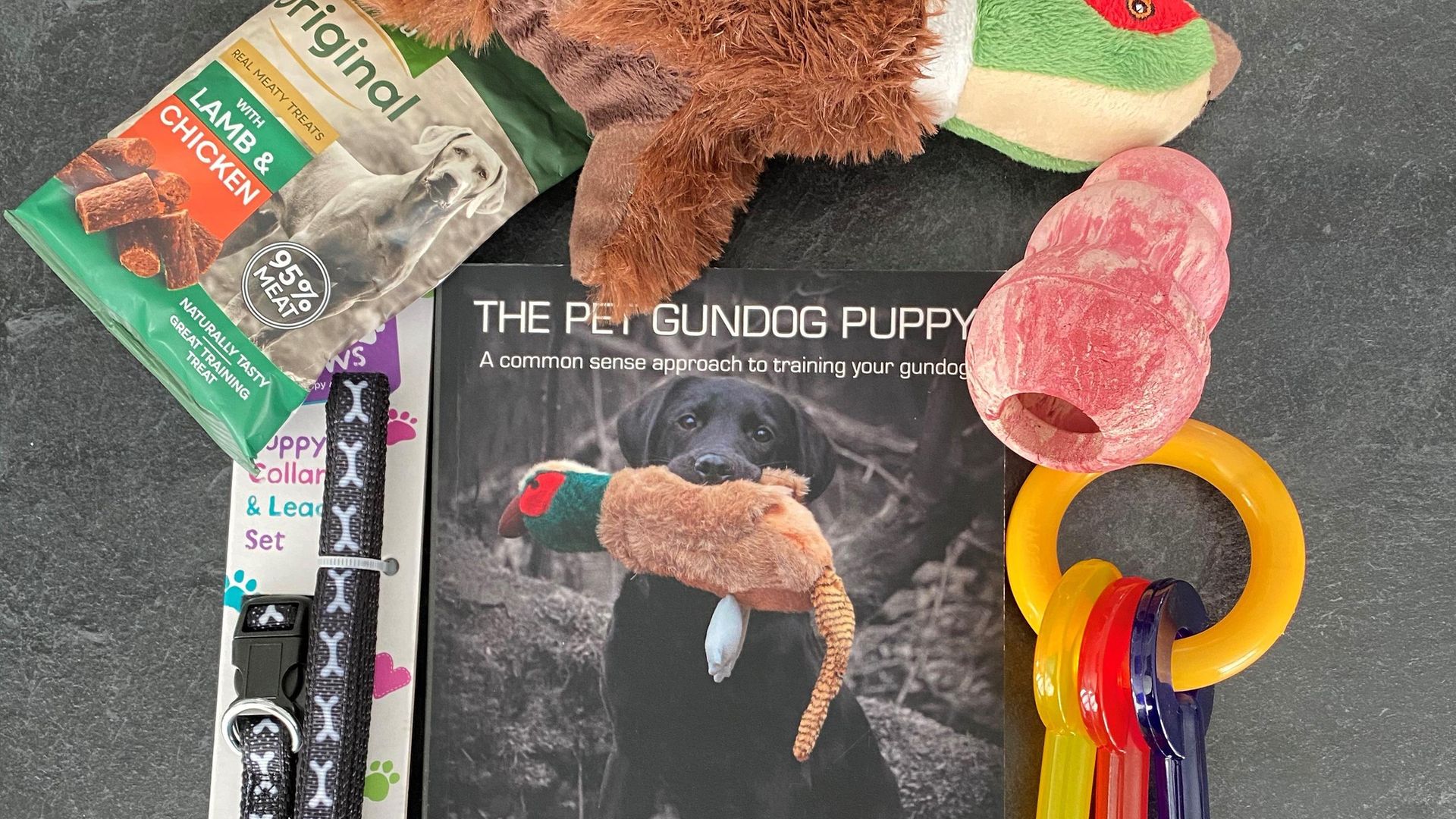In the first of her new series charting the process of bringing a gundog into the home, Lez Graham talks us through everything we should do in advance of our new puppy’s arrival
It really doesn’t matter whether this is your first puppy or, like me, you already share your home with a couple of pet gundogs, getting organised for welcoming your new arrival always seems to swing between excitement and stress, and then back to excitement.
However, being prepared and feeling in control helps to keep the pendulum swinging more towards excitement and away from anxiety.
I’m about to collect my new puppy Emrys, a beautiful black Labrador, and for the last few weeks I’ve been preparing my dogs for the arrival of a new pack member, organising myself and my home, and indulging in some online shopping and a very exciting lockdown trip to Pets at Home.
 credit: Lez Graham
credit: Lez Graham
Preparing yourself
It can take a bit of getting your head around bringing home a new puppy: early mornings and late nights; dividing up your day into when the puppy is in the crate ‘being’, when your puppy is hanging around with you, when to do a bit of training and when your puppy will be sleeping.
If it’s your first puppy, it can be a bit daunting when the realisation hits that you are completely and utterly responsible for the little bundle of fluff that you’re going to be bringing home, not just for the cute, exciting times whilst he’s a puppy, but also for the adolescent, tearing-your-hair-out teenage months, as well as the older dog and that final trip to the vets.
 credit: Lez Graham
credit: Lez Graham
Preparing your resident dogs
Dogs learn from each other; they speak the same language, follow the same behaviour cues and copy each other. If you have a well-behaved, well-trained dog at home, you’re halfway to having a well-behaved puppy as they will look to the other dog to see how they should behave. If you have a dog that is responsive to you every time, your puppy will follow suit – as far as his young and impressionable mind is concerned, that’s what’s expected in his new pack.
Take a mental step back from your dogs and observe their behaviour a few weeks before bringing your puppy home. Do they go on their bed first time? Do they recall immediately? Stop on the whistle, sorry, stop instantly on the whistle? Do they push past you through doorways or step back and wait for you to go first? Do they mither for attention? Beg for food? Do they have any little habits or behaviours that make you sigh or roll your eyes?
Now is the time to ‘bootcamp’ your dogs at home so that you’re really pleased with their level of training and behaviour around the home. And if you don’t already, make sure they spend some time away from you because when puppy arrives you’ll need some quality one-on-one time with
him to settle him, train him and generally sit and do nothing.
 credit: Lez Graham
credit: Lez Graham
Preparing your home
Puppies are into everything and, just like babies, everything is into their mouth. Take a little bit of time now to wander around your home with a critical eye, looking for dangling electrical cables, bits of carpet sticking up, frayed rugs, dangling window sashes… anything that your puppy could chew, take hold of and pull down or strangle himself on.
Check out your garden, cordoning off pebbles (irresistible to little mouths), ponds, steps and stairs. Although one step isn’t too bad, providing its not too high, more than that should be cordoned off. A puppy’s joints simply can’t cope with the bounce, bounce, bounce of going up and down stairs and this could create issues later on for you. Also, young puppies don’t have the best balance so you run the risk of puppy going tail over head down them.
 credit: Lez Graham
credit: Lez Graham
Your pre-puppy shopping list
It’s really tempting to rush out and buy all the latest puppy ‘gear’, toys and puppy dummies as well as a couple of slip leads and plush beds, but I’d advise you to just buy the basics now and stock up your training kit as and when you need it. Not only does this mean you’ll be able to see what works for your growing puppy, but as this is such an expensive time, spread the costs over a couple of months instead and prolong the excitement by shopping for a big longer too.
The basics that you’ll need are:
- Two small crates, one for the car and one for the home. Make them large enough for your puppy to be able to sit up and lie flat plus a bit of growing room; too large and your puppy may use one end as a toilet. You can also get crates with dividers that you can move as your puppy grows.
- Vet bed or similar – three pieces per crate (one in the wash, one spare and one in the crate). It might work out more economical to buy a roll and cut to size.
- A couple of soft toys
- A couple of medium chew toys
- A couple of kongs
- Food bowls
- Two crate bowls/coup cups that attach to the side of the crate thereby preventing your puppy knocking the water over when he’s playing
- A cheap puppy collar and lead
The pup’s progress
As we’ve been preparing for our puppy, our puppy has been growing, developing and learning how to be a canine. Born with no sense of touch, sound or sight, our new-born puppy can’t regulate his temperature, his bladder or his bowel. In fact, the only thing that is really working is his amazing nose – all 220-300 million scent receptors, which will be fully functioning within a couple of days. His ear flaps start to open at around 10-15 days, which coincides with him entering the transition period and it is as he leaves this period at around three weeks that his eyes begin to open.
He then enters the first phase of the socialisation period. The canine socialisation phase lasts between weeks three and seven, and not only does our puppy become more aware of his surroundings during this time but he also learns how to be a dog. It is during these crucial four weeks that he learns all about communication; posturing, vocalising and facial expression, he learns how to bark and be barked at, how to dominate and show deference and he learns all about discipline – discipline from his dam and discipline from his siblings.
At around seven weeks he enters the second phase of the socialisation period, the human socialisation phase… perfect timing for him to leave his litter and move to his new home.
Lez Graham is author of The Pet Gundog series and a Canine Behaviourist and gundog trainer. Focused on training the next generation, she runs the Accredited Pet Gundog Instructor programme which is now its 5th year. Contact her via lez@thepetgundog.co.uk or visit www.thepetgundog.co.uk
You can follow Emrys’s journey on his own Facebook page here